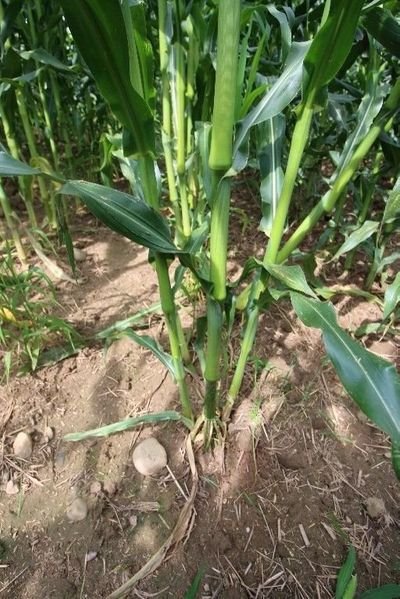Project leader: Maninder Singh
Enhancing the value of the Michigan corn industry through new uses for corn is a research priority for the Corn Marketing Program of Michigan (CMPM). This research project aims to aid in the creation of a Michigan specific dataset on performance of open pollinated corn varieties across various locations and to optimize management decisions for specialty uses.
The first project objective is to evaluate open pollinated corn varieties for yield potential across different Michigan environments. We are leveraging ongoing research plots funded by Michigan Craft Beverage Council (MCBC) for this objective. Twenty corn varieties representing a wide range of characteristics were planted in May 2023 at three locations (MSU Kellogg Biological Station [KBS], Hickory Corners; MSU farm, Mason; MSU Upper Peninsula Research and Extension Center [UPREC], Chatham). These locations were chosen to provide a latitudinal gradient that will result in a wide range of climate and weather conditions.
To minimize cross pollination issues for quality traits, one replication was planted using 8 row wide plots and grain samples will be collected only from middle 2 rows. Corn is managed using best management practices for conventional corn to achieve the highest yield and protect grain from disease or degradation.
The second objective is to quantify optimal seeding rate in selected varieties for maximizing yield while maintaining quality characteristics. To do this, four varieties were selected based on 2022 feedback from distillers. Two varieties (MN 13, Ohio Blue) were selected based on yield potential and the other two (Bloody Butcher, Wapsie Valley) based on desired quality traits.
This field experiment was planted in May 2023 at the MSU farm in Mason and the MSU KBS in Hickory Corners. Each variety was planted at four seeding rates:16,000 seeds/ac to 34,000 seeds/ac in 6,000 seeds increments. The highest seeding rate was selected based on the current recommendation for yellow dent hybrids, and the lowest rate based on observations from 2022 trials.
The third objective is to develop a dataset for future screening of specialty corn germplasm and management strategies. In 2023, 250 lines were planted at the MSU farm in East Lansing. These lines consisted of historical heirloom varieties important for the food industry (e.g., tortillas, distilling, and other specialty uses). The varieties were selected from a larger set of 1000 heirlooms across the country based on their origin in northern latitudes. Results from this objective will help to obtain desired seed of specialty lines and help narrow the focus of future research to a subset of entries to be tested in Michigan locations.
Due to lack of moisture and rainfall in May and June 2023, variability in plant stand was observed, particularly for the location in Mason. The project team will continue to monitor plant growth and variability within the plots at this location during the season. At the MSU KBS, planting was successful and crop condition is excellent, but low rainfall reduced herbicide efficacy, so cultivation and hand weeding were utilized to minimize weed pressure. At the MSU UPREC, crop condition is good with some weed pressure in portions of the field. Weed management and consistent plant stands are more difficult with some of these open pollinated varieties, particularly in years when residual herbicides are less effective due to low precipitation.
Varieties differed in amount of tillering, plant and ear height, and ability to attract insects (pictures 1 and 2). Variety “Atomic Orange” was the earliest to tassel and silk and was also the shortest and severely damaged by racoons at MSU KBS. Varieties “Bloody Butcher”, “Hickory King”, “Jimmy Red”, and “Truckers Favorite” stood out as extremely tall varieties, several feet taller than the modern hybrid and ears that are growing up to 8 feet high on the plants. Variety “Montana Morado Maize” attracted many pollinators, particularly honeybees, during flowering. Some varieties partially lodged early in the growth cycle but continued to grow upright afterwards resulting in curved stalks.
Next Steps: Data collection will focus on a combination of plot notes on biotic/abiotic stresses during the season, plant counts, harvest data (yield, moisture, and test weight), and quality traits (on subsamples from 8 row plots). Upon completion, data will be analyzed and the results will be published in the CMPM annual research report, which will be released in early 2024.
Photos:

Pictures 1a and b: Variety with multiple ears on the same node (a) and tillers per plant (b).

Pictures 2a and b: Variety with tallest plants (a) and attracting pollinators (b).








